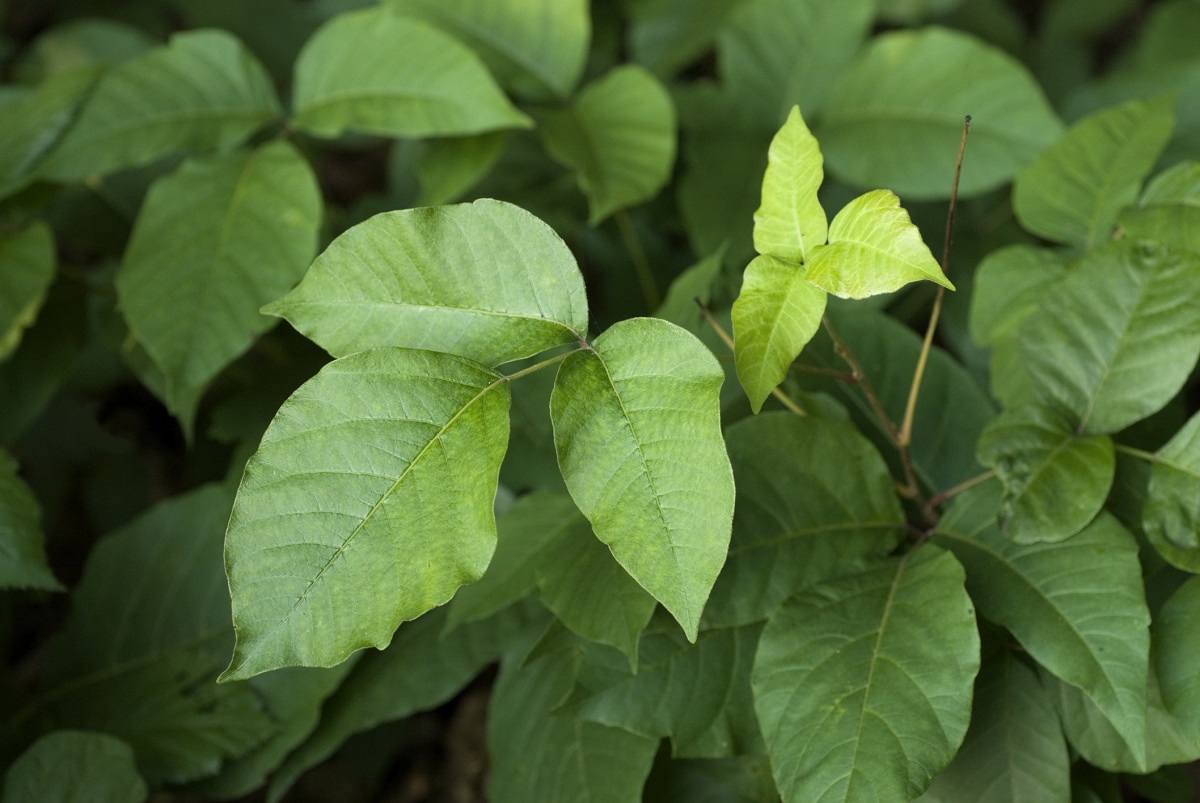The Medical Minute: Don’t let poison ivy ruin the day

It winds around tree trunks, hides among flowers and creeps along less-manicured lawns. Most victims of its offending oil are unaware they’ve encountered it until the tell-tale rash, blisters and itching appear. Poison ivy can cause discomfort for some and utter misery for others. Dermatologist Dr. Alexandra Flamm with Penn State Health Dermatology answers questions about how to avoid the pesky weed and what to do if exposed.
How can we recognize poison ivy?
There’s an old rhyme that I love — “Leaves of three, let them be.” What you’re looking for is a grouping of three leaves together. That’s usually a sign that you’re dealing with poison ivy. Sure, some other types of plants grow in that pattern, but it’s better to assume all leaves of three are poison ivy and take precautionary measures.
What types of precautions?
I’d recommend wearing long sleeves, long pants and covered shoes. Wear heavy cotton gardening gloves if you’re going to be weeding where there might be poison ivy. Interestingly, rubber gloves won’t protect you because the oil extract from poison ivy that causes the reaction — urushiol — penetrates rubber.
We’ve been exposed. Now what?
Wash the area immediately with soap and water — within five to 10 minutes of exposure. It’s a much shorter window to avoid developing a rash than people may realize. And because it’s an oil, it can spread. So if you think your hands touched poison ivy, avoid touching any part of your body until you’ve washed them. If you get it on your clothes, run them through the washing machine to get rid of the oil. And wash those gardening gloves.
Can you explain the risks of burning poison ivy?
We generally see poison ivy in the summer, but then we’ll see another peak in the fall when people burn leaves and unknowingly they’ve got some poison ivy in the pile, too. When burned, the urushiol from the poison ivy gets into the smoke and people can get the rash over their entire exposed body.
What about the dangers of breathing it in?
The smoke from burning poison ivy can possibly irritate your nasal passages or lungs, but it much more commonly causes an external rash.
Is the rash contagious?
Poison ivy only spreads through the transference of the oil. The rash itself — even if the blisters pop and ooze — is not contagious.
What should we do when a rash develops?
A rash can appear anywhere from within a couple of hours of exposure to a couple of days. First, wash the area thoroughly in case there’s any residual oil. Then you can use over-the-counter treatments including cool compresses, over-the-counter cortisone cream, oatmeal baths and oral antihistamines like Benadryl or Claritin to help alleviate the itchiness. You want to control the itching because if you scratch the rash or break open the blisters, you could develop an infection.
When should someone seek medical care?
If you’ve tried those over-the-counter treatments and you’re still having a lot of itching, you should see a doctor for treatment. If you have a lot of your body covered in poison ivy, that would also be a reason to go to a doctor. Or if the poison ivy rash is affecting very sensitive areas — your face or your groin area, or on the palms of your hands or soles of your feet — that can cause swelling and you should see a doctor.
How do you treat it?
We typically will use topical prescription steroids as a first-line treatment. But if it’s a very severe case or the person is noticing a lot of swelling or experiencing significant discomfort, we may treat them with oral steroids, sometimes over the course of several weeks.
Any final words of wisdom?
Poison ivy is really common, and I think that people should have a very low threshold to get medical care if they’re uncomfortable. We don’t have to suffer through it. See a doctor. There are treatments available to make the itching and rash go away.
Related content:
- The Medical Minute: Poison ivy affects some people more than others
- The Medical Minute: What you need to know about Lyme disease
The Medical Minute is a weekly health news feature produced by Penn State Health. Articles feature the expertise of faculty, physicians and staff, and are designed to offer timely, relevant health information of interest to a broad audience.
If you're having trouble accessing this content, or would like it in another format, please email Penn State Health Marketing & Communications.
